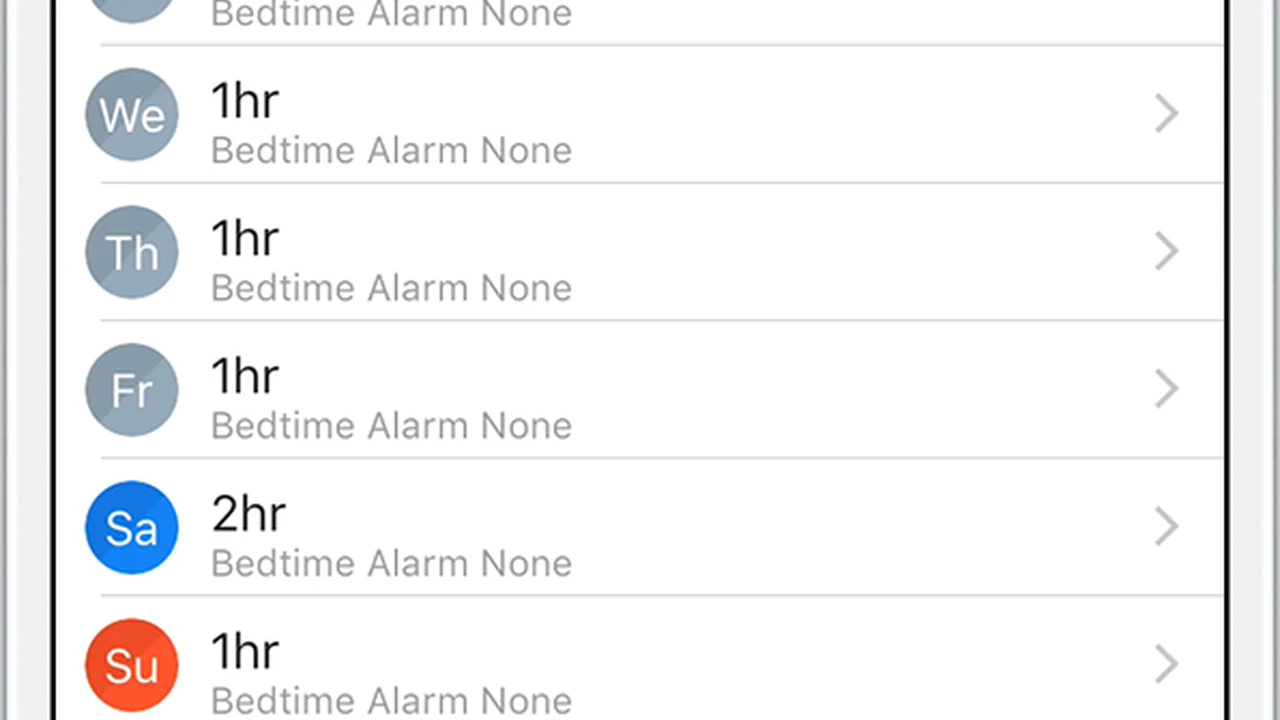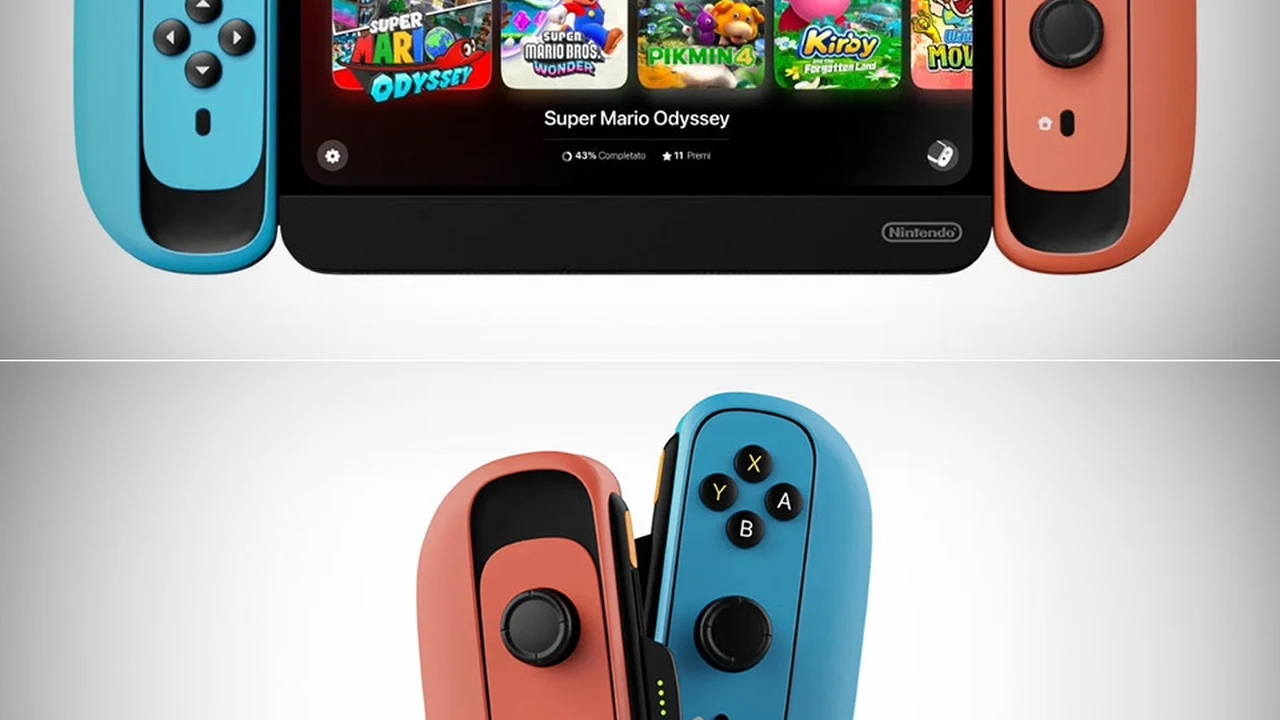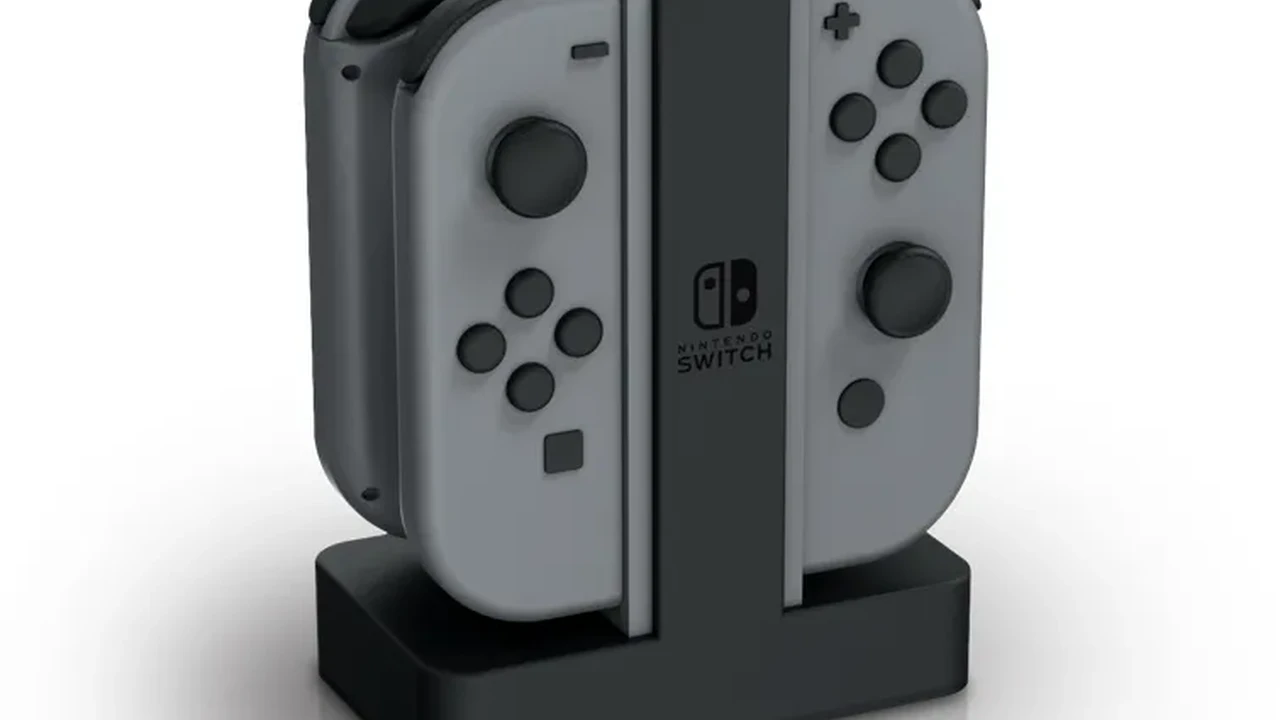Nintendo Switch 2 Parental Controls Setup
Learn how to set up and manage parental controls on your Nintendo Switch 2 console.

Learn how to set up and manage parental controls on your Nintendo Switch 2 console. The Nintendo Switch 2 is poised to be a fantastic console for families, offering a vast library of games suitable for all ages. However, with great gaming comes great responsibility, especially for parents. Ensuring your children have a safe and age-appropriate gaming experience is paramount. This comprehensive guide will walk you through every step of setting up and managing parental controls on your new Nintendo Switch 2, covering everything from restricting game content to managing play time and online interactions. We'll also delve into specific product recommendations that can aid in this process, comparing their features and discussing their pricing.
Nintendo Switch 2 Parental Controls Setup Guide
Understanding Nintendo Switch 2 Parental Controls Features
The Nintendo Switch 2, much like its predecessor, is expected to come equipped with robust parental control features designed to give parents peace of mind. These controls are typically managed through a dedicated app on your smartphone, offering convenience and flexibility. Before diving into the setup, let's understand the core functionalities you'll have at your fingertips:
- Software Restriction: This allows you to prevent access to games based on their age rating (e.g., ESRB, PEGI, CERO). You can set a maximum age rating, ensuring your child only plays games deemed appropriate for their age group.
- Play Time Limit: You can set daily play time limits for your child. Once the limit is reached, the console can either display a notification or automatically suspend gameplay, encouraging breaks and preventing excessive screen time.
- Communication Restriction: This feature controls online interactions, including voice chat, text chat, and sharing screenshots or videos on social media. You can choose to restrict all communication or allow it only with approved friends.
- eShop Purchase Restriction: Prevent unauthorized purchases from the Nintendo eShop. This is crucial for avoiding unexpected bills and ensuring your child doesn't buy games or in-game items without your permission.
- Screenshot and Video Sharing Restriction: Control whether your child can share screenshots and video clips from their gameplay on social media platforms.
- VR Mode Restriction: If the Nintendo Switch 2 introduces VR capabilities, parental controls will likely include options to restrict access to VR content or set time limits for VR use, considering potential eye strain or motion sickness.
Initial Setup of Nintendo Switch 2 Parental Controls
Setting up parental controls on your Nintendo Switch 2 is a straightforward process, primarily done through the Nintendo Switch Parental Controls smartphone app. Here’s a step-by-step guide:
Step 1 Download and Install the Nintendo Switch Parental Controls App
Before you even unbox your Nintendo Switch 2, download the official Nintendo Switch Parental Controls app from your smartphone's app store (Google Play Store for Android or Apple App Store for iOS). This app is your central hub for managing all parental control settings.
Step 2 Link Your Nintendo Account to the App
Open the app and sign in with your Nintendo Account. If you don't have one, you'll need to create one. This account will be the administrator for the parental controls.
Step 3 Pair Your Nintendo Switch 2 Console
On your Nintendo Switch 2 console, navigate to System Settings > Parental Controls. Select 'Use Your Smart Device' and follow the on-screen instructions to link your console to the app. This usually involves scanning a QR code displayed on the console with your smartphone camera.
Step 4 Configure Basic Parental Control Settings
Once paired, the app will guide you through initial setup. You'll be prompted to set:
- Age-Based Restrictions: Choose the age rating you deem appropriate for your child. The app will automatically filter games based on this setting.
- Daily Play Time Limits: Set a daily limit for how long your child can play. You can choose to have the console notify them when time is almost up, or automatically suspend gameplay.
- Bedtime Alarm: Set a specific time when the console will automatically suspend gameplay, even if the daily play time limit hasn't been reached. This is excellent for enforcing bedtimes.
Advanced Management of Nintendo Switch 2 Parental Controls
Beyond the initial setup, the Nintendo Switch Parental Controls app offers granular control over various aspects of your child's gaming experience. Let's explore these advanced settings:
Managing Software Restrictions and Whitelisting
While age-based restrictions are a good starting point, you might want more specific control. The app allows you to:
- Whitelist Games: Even if a game exceeds the set age rating, you can manually approve it for your child to play. This is useful for educational games or titles you've personally vetted.
- Blacklist Games: Conversely, you can block specific games, even if they fall within the approved age rating. This might be for games with content you find unsuitable or if you want to limit access to certain addictive titles.
Customizing Play Time Limits and Notifications
The play time limit feature is highly customizable:
- Flexible Daily Limits: Set different play time limits for weekdays and weekends.
- Bonus Play Time: Reward good behavior with extra play time. You can temporarily extend the daily limit directly from the app.
- Notification Settings: Choose whether the console displays a subtle notification when time is almost up, or if it forces a suspension of gameplay. For younger children, a forced suspension might be more effective.
Controlling Online Interactions and Communication
Online safety is a major concern for parents. The app provides robust controls for online interactions:
- Friend Request Management: Control whether your child can send or receive friend requests.
- Voice Chat and Text Chat: Restrict or allow voice and text chat in games. For younger children, it's often best to disable these features entirely unless you're actively supervising.
- Social Media Sharing: Prevent your child from sharing screenshots or video clips from their gameplay to social media platforms like Twitter or Facebook.
Securing eShop Purchases
To prevent unauthorized spending, ensure the eShop purchase restriction is enabled. This will require a password for any purchase made on the console, even if your Nintendo Account is linked. Consider setting up a separate child account with limited permissions for purchases.
Recommended Products for Enhanced Parental Control and Monitoring
While the built-in Nintendo Switch 2 parental controls are excellent, some third-party products and services can offer an additional layer of security and monitoring, especially for broader digital well-being. These are particularly useful for managing screen time across multiple devices or gaining deeper insights into online activity.
1. Circle Home Plus
Description: Circle Home Plus is a comprehensive parental control device that connects to your home Wi-Fi router. It allows you to manage screen time, filter content, and track usage across all devices connected to your home network, including the Nintendo Switch 2, smartphones, tablets, and computers.
Usage Scenarios: Ideal for families with multiple children and various devices. It's perfect for enforcing consistent screen time rules across the household and blocking inappropriate content at the network level.
Comparison: Unlike the Nintendo app which focuses solely on the Switch, Circle Home Plus offers a holistic approach to digital parenting. It's more powerful for content filtering and time management across an entire home network.
Pricing: The Circle Home Plus device typically costs around $129, with an optional subscription service (Circle Premium) for advanced features like location tracking and usage history, priced at approximately $9.99 per month or $89.99 per year.
2. Bark Parental Control App
Description: Bark is an AI-powered parental control app that monitors text messages, emails, YouTube, and over 30 social media platforms for potential issues like cyberbullying, predatory behavior, drug use, and depression. While it doesn't directly control the Nintendo Switch 2's gameplay, it can monitor communication if your child uses other devices for online interactions related to gaming.
Usage Scenarios: Best for parents concerned about their child's online safety and digital communication beyond just gaming. It provides alerts for concerning content, allowing parents to intervene when necessary.
Comparison: Bark is less about restricting access and more about monitoring and alerting. It complements the Nintendo Switch 2's built-in controls by providing insights into broader online activities.
Pricing: Bark offers various plans, with Bark Premium starting at around $14 per month or $99 per year, covering unlimited devices.
3. Net Nanny Parental Control Software
Description: Net Nanny is a long-standing parental control software known for its robust content filtering and internet usage management. It can be installed on individual devices (PCs, Macs, Android, iOS) and offers features like internet filtering, screen time management, and app blocking. While it won't directly control the Switch 2's internal functions, it can manage internet access for the console if it's connected to a device running Net Nanny (e.g., through a shared Wi-Fi hotspot from a monitored phone).
Usage Scenarios: Useful for families who want detailed control over internet access and content filtering on specific devices, and can be adapted for scenarios where the Switch 2 connects through a monitored device.
Comparison: Net Nanny provides more granular control over web content filtering than basic router settings. It's a good option for parents who want to ensure safe browsing environments across multiple devices.
Pricing: Net Nanny offers plans starting from approximately $39.99 per year for one device, up to $129.99 per year for 20 devices.
Troubleshooting Common Parental Control Issues
Even with the best setup, you might encounter minor hiccups. Here are some common issues and their solutions:
Parental Controls Not Applying
Check Console Connection: Ensure your Nintendo Switch 2 is connected to the internet and properly linked to the Parental Controls app. Sometimes, a simple restart of both the console and the app can resolve connectivity issues.
App Sync: Make sure the app has successfully synced with the console. There might be a slight delay for settings to take effect.
Child Bypassing Controls
PIN Security: Ensure your parental control PIN is strong and not easily guessable by your child. Never share your PIN.
Physical Access: If your child has physical access to the console's system settings, they might try to disable controls. Consider placing the console in a common area where you can supervise its use.
Account Management: Ensure your child is using a restricted profile and not your main Nintendo Account, which would have full access.
Play Time Limits Not Working Correctly
Time Zone Settings: Verify that the time zone settings on both your smartphone and the Nintendo Switch 2 console are correct and synchronized.
App Updates: Ensure both the Nintendo Switch Parental Controls app and the console's system software are updated to the latest versions.
Best Practices for Digital Parenting with Nintendo Switch 2
Setting up parental controls is just one part of responsible digital parenting. Here are some best practices to ensure a healthy gaming environment:
Open Communication with Your Child
Talk to your children about the parental controls you've set up and why they are in place. Explain the importance of balanced screen time, online safety, and age-appropriate content. Involving them in the discussion can foster trust and understanding.
Regularly Review and Adjust Settings
As your child grows, their needs and interests will change. Periodically review your parental control settings. What was appropriate for a 7-year-old might be too restrictive for a 10-year-old. Adjust settings as needed, always keeping their safety and development in mind.
Lead by Example
Your own screen time habits can significantly influence your children. Demonstrate healthy digital habits by taking breaks, engaging in other activities, and not being constantly glued to screens.
Encourage Diverse Activities
Ensure gaming is just one part of your child's day. Encourage them to engage in outdoor play, reading, creative arts, and social interactions outside of gaming. A balanced lifestyle is key to healthy development.
Stay Informed About Games and Trends
Keep yourself informed about the games your child is playing and the latest online trends. Websites like Common Sense Media offer excellent reviews and age recommendations for games, movies, and apps. Understanding the content helps you make informed decisions about restrictions.
Utilize the Activity Report
The Nintendo Switch Parental Controls app provides a monthly activity report, showing you which games your child played and for how long. Use this report as a conversation starter and to monitor their gaming habits.
The Future of Parental Controls on Nintendo Switch 2
As technology evolves, so too will parental control features. We can anticipate the Nintendo Switch 2 to potentially incorporate more advanced AI-driven content filtering, more sophisticated time management tools that integrate with family calendars, and perhaps even biometric authentication for purchases or access. Nintendo has consistently shown a commitment to family-friendly gaming, and the evolution of their parental control suite will undoubtedly reflect this dedication.
By diligently setting up and managing parental controls on your Nintendo Switch 2, and by fostering open communication and healthy digital habits, you can ensure your children enjoy the exciting world of gaming safely and responsibly. Remember, these tools are designed to support you in guiding your children through their digital journey, not to replace active parenting. Embrace the technology, but always prioritize your child's well-being and development.
:max_bytes(150000):strip_icc()/277019-baked-pork-chops-with-cream-of-mushroom-soup-DDMFS-beauty-4x3-BG-7505-5762b731cf30447d9cbbbbbf387beafa.jpg)






